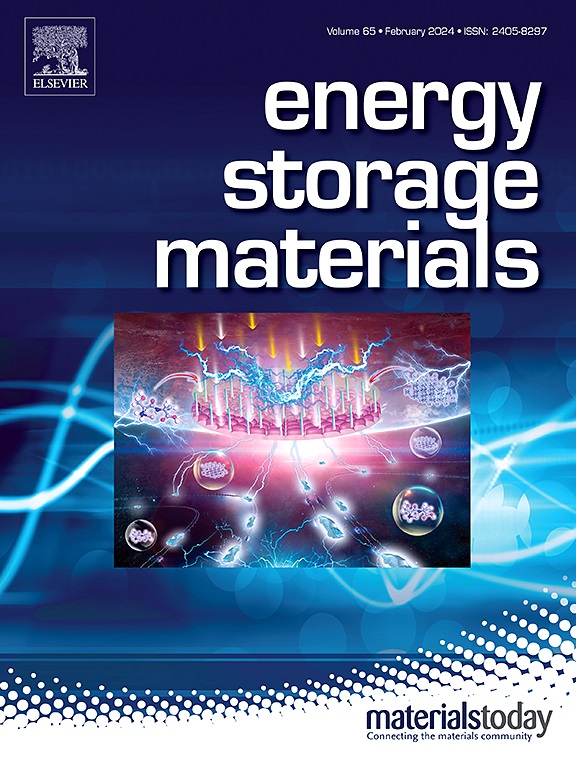Ultra-thin, high-performance composite solid electrolytes for lithium metal batteries: Progress and prospects
IF 20.2
1区 材料科学
Q1 CHEMISTRY, PHYSICAL
引用次数: 0
Abstract
Significant progress has been made in recent years in the development of high-performance lithium batteries, which are critical to meeting the growing demands for next-generation energy storage systems, wide range of electronic devices and technological applications. Solid-state lithium metal batteries (SSLMBs) are considered as one of the most promising alternatives to state-of-the-art lithium-ion batteries (LIBs) due to their potential for higher energy density and the ability to address safety concerns associated with traditional LIBs that use flammable liquid electrolytes. Despite their promise, SSLMBs still face significant challenges that hinder their practical application, particularly in terms of Li+ conductivity, Li+ transference number, thickness, machinability, mechanochemical stability, and interfacial compatibility. This review comprehensively examined the specific properties of practical solid-state electrolytes (SSEs) based on current applications and summarized the opportunities and challenges in designing high-performance SSEs with high Li+ conductivity, high Li+ transference number, and ultra-thin structures (referred to as HCTSEs). Furthermore, the advantages and limitations of various design strategies were discussed and evaluated. The performance improvements of SSLMBs enabled by HCTSEs were summarized, and new perspectives on the design of HCTSEs were proposed to facilitate the large-scale application of SSLMBs in the future.


锂金属电池用超薄高性能复合固体电解质:进展与展望
近年来,高性能锂电池的发展取得了重大进展,这对于满足下一代储能系统、广泛的电子设备和技术应用的日益增长的需求至关重要。固态锂金属电池(sslmb)被认为是最先进的锂离子电池(lib)最有前途的替代品之一,因为它们具有更高的能量密度,并且能够解决与使用易燃液体电解质的传统锂离子电池相关的安全问题。尽管sslmb前景看好,但仍面临阻碍其实际应用的重大挑战,特别是在Li+电导率、Li+转移数、厚度、可加工性、机械化学稳定性和界面兼容性方面。本文综述了基于当前应用的固体电解质的具体性能,总结了设计具有高Li+电导率、高Li+转移数和超薄结构(HCTSEs)的高性能固体电解质的机遇和挑战。并对各种设计策略的优缺点进行了讨论和评价。总结了hctse对sslmb性能的改进,并提出了hctse设计的新观点,以促进sslmb在未来的大规模应用。
本文章由计算机程序翻译,如有差异,请以英文原文为准。
求助全文
约1分钟内获得全文
求助全文
来源期刊

Energy Storage Materials
Materials Science-General Materials Science
CiteScore
33.00
自引率
5.90%
发文量
652
审稿时长
27 days
期刊介绍:
Energy Storage Materials is a global interdisciplinary journal dedicated to sharing scientific and technological advancements in materials and devices for advanced energy storage and related energy conversion, such as in metal-O2 batteries. The journal features comprehensive research articles, including full papers and short communications, as well as authoritative feature articles and reviews by leading experts in the field.
Energy Storage Materials covers a wide range of topics, including the synthesis, fabrication, structure, properties, performance, and technological applications of energy storage materials. Additionally, the journal explores strategies, policies, and developments in the field of energy storage materials and devices for sustainable energy.
Published papers are selected based on their scientific and technological significance, their ability to provide valuable new knowledge, and their relevance to the international research community.
 求助内容:
求助内容: 应助结果提醒方式:
应助结果提醒方式:


